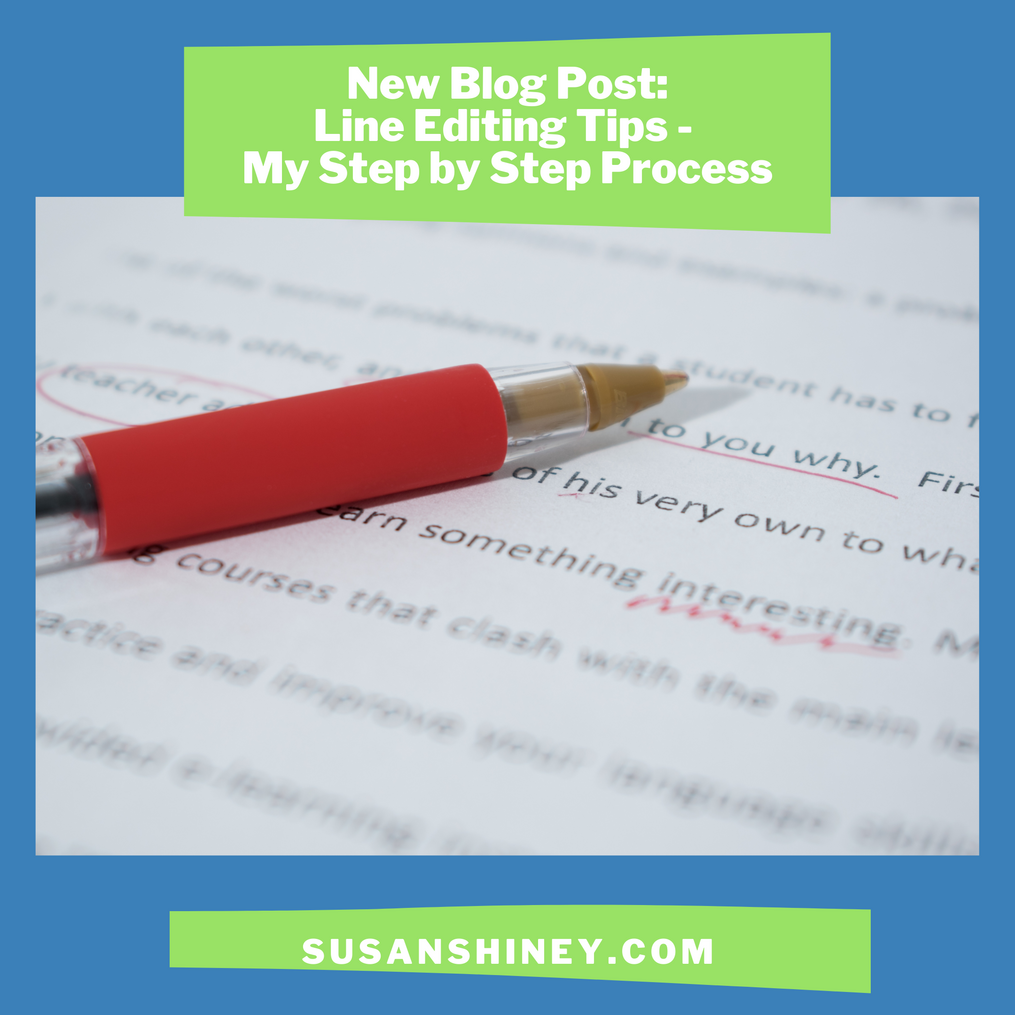
Developmental Editing versus Line-Editing
I think of developmental editing as working on the macro structure of your novel and making sure the spine or the character arcs and obligatory genre scenes are fleshed out. I also worked on the structure of my scenes during the developmental edit and will continue to hone my scene structures during the line editing phase. After I finish with my initial developmental editing pass with my manuscript I send it to critique partners for feedback and ask them just to focus on the developmental issues. I discuss how to incorporate their feedback in 15 Tips for Organizing and Implementing Feedback for Revisions. Micro changes at the paragraph and sentence level are line-editing as in going line by line through your manuscript to revise them.
Line-editing versus Copy editing
Line editing also includes weaving characterizations, adding emotional reactions, dialogue cues and balancing out the story elements so you are not doing too much of one element for several paragraphs in a row. This is the point where I really try to slow down and make sure I am painting a picture with my writing and that the reader will connect more with what is happening. Also, make sure I am showing and not telling. I then make the dialogue sound more natural and make sure my narrative voice is consistent. I also work on filter words and making sure I have sentence variety when I line edit. Copy editing is nearing the end of your editing process where you focus on punctuation, grammar, spelling, etc.
For a full-list of what to work on for line-editing I strongly suggest Jami Gold's Writing Craft: Master List of Line Editing Skills. This is an excellent exhaustive list of the steps of line editing.
My Step-by-Step Process for Line-Editing
I am the kind of writer that has to figure out a process that works for me and then I can tackle my draft and make a lot of progress. If I don't have a good system the sands of time slip through my fingers and I get frustrated. I have high hopes for my second book to move quickly because I know how I like to work at each phase of the process. I also have some tricks that I need to include for accountability because I love checking off boxes and keeping logs of things.
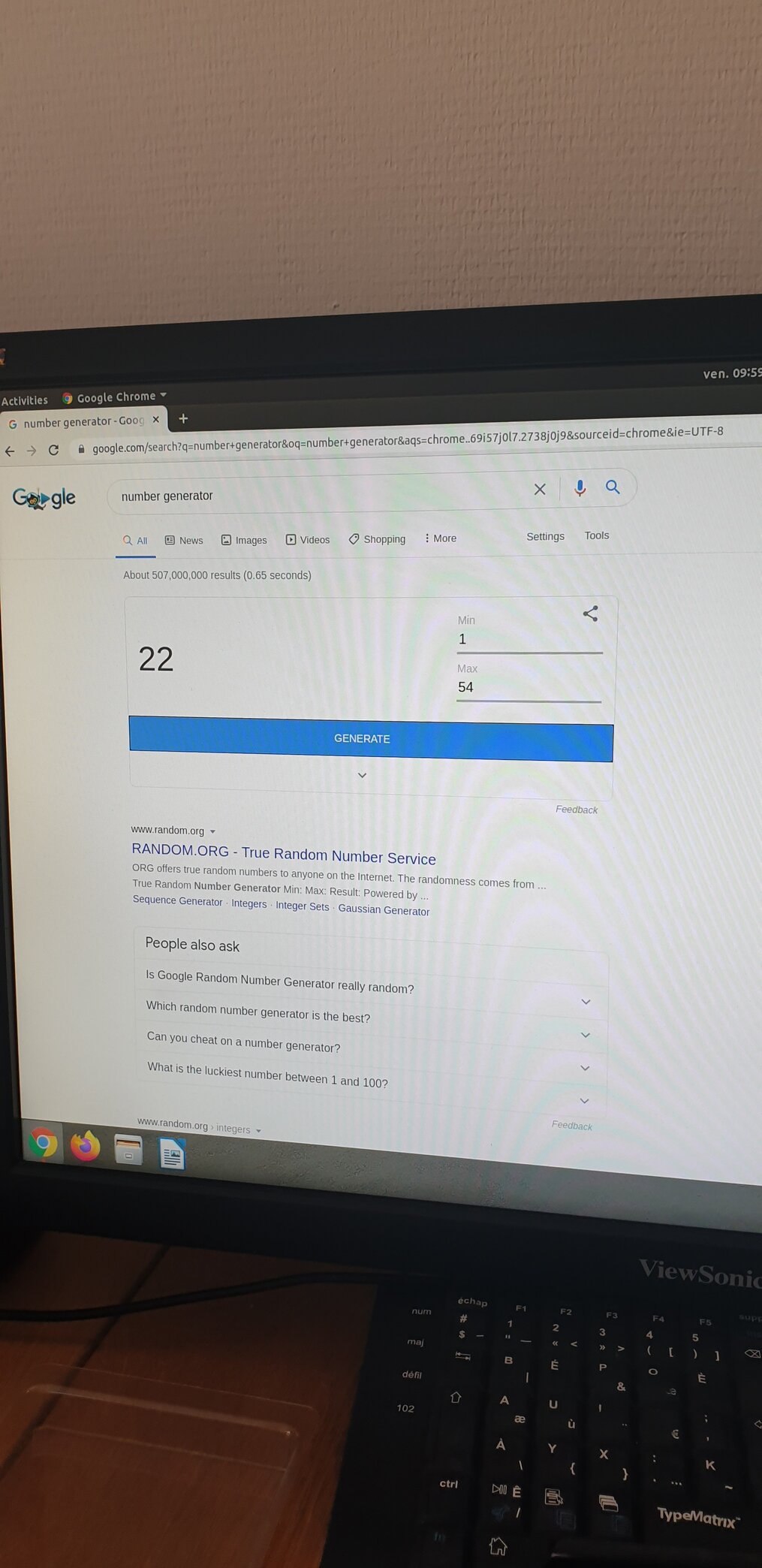
Choose Chapters Randomly to Edit
I did my first draft and second drafts moving from the beginning to the end of the story. For my third draft I moved from the end backwards to the beginning because I felt like my ending portion of the initial drafts tended to get rushed because I just wanted to be done with it each time. For my fourth draft I skipped around fixing developmental issues that my critique partners identified. My fifth draft is the one I am working on now and I wanted to see chapters out of context to help me focus on what is missing with a fresh perspective.
I type number generator into google and enter in 1 to 55 for the numbers of chapters in my manuscript. Then it gives me a number to focus on editing. I set a goal for the week for the number of chapters I hope to revise. (If you have longer chapters you could also break it down by scenes and give them numbers.)
Note: I am not a stickler to the number system, I make the rules after all. If the chapter number comes up that is really long or intense and I don't feel like working on that one, I just run the generator again!
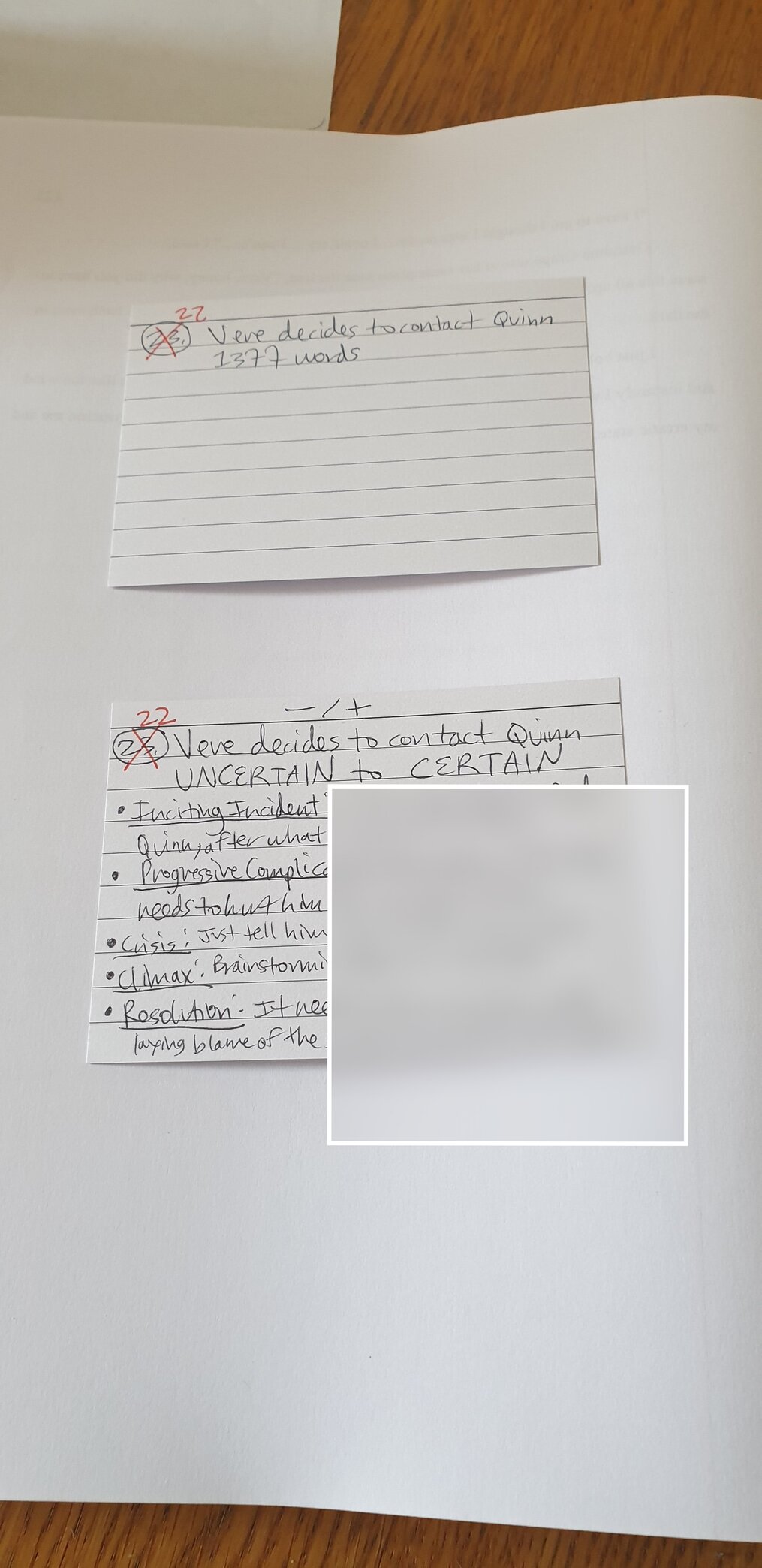
Use Index Cards with Chapter Structure Outlines
Once, I get the chapter number that I am going to focus on, I pull out the index card outlines I have for that chapter to keep me inline with the story elements I don't want to alter too much. I have the inciting incident, progressive complications, the crisis, the climax, and the resolution along with the value change and the adjective change for my protagonist. I got this system for scenes from the Story Grid that has a book and an excellent blog.
![]()
Log the Time for My Writing Session
One thing that is exciting about the first couple of drafts is that you can focus on word count. When it comes to line-editing, I track the time I spend editing and the number of chapters I edit per week. I try to keep a chain of daily writing sessions in the same color.
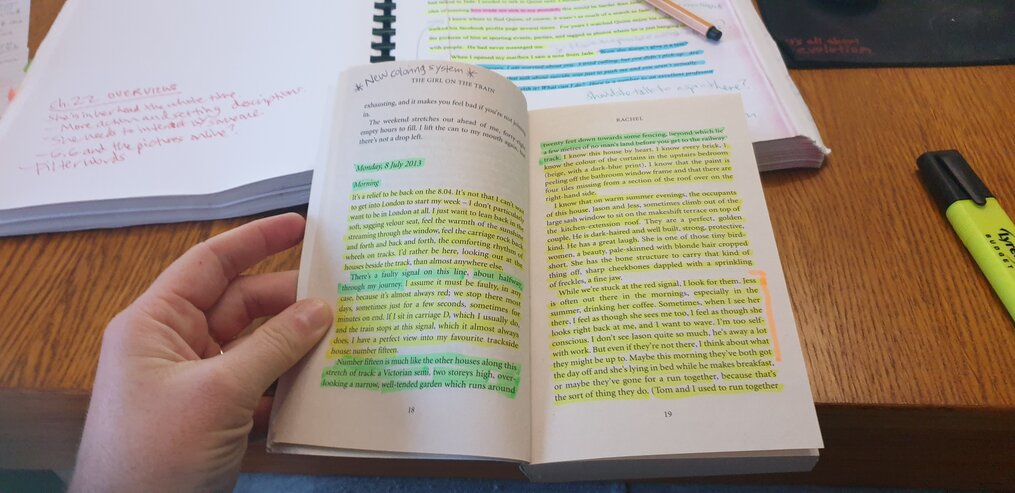
Color-Code a Book in a P.O.V. similar to your own
A writer friend of mine mentioned she is using the color-coding system for her edits and that it motivated her to take a closer look at her writing in a playful way. Jami Gold describes How to Use Color-Coding for editing here. I dug deeper and found that the creator of a color-coded editing system, Margie Lawson, has learning packets for sale and classes that take you can take to go through her method in-depth. I highly recommend her clear way of describing the system.
A good excuse to buy a bunch of highlighters and color pens too!
I like to start my editing session with looking at a book that has a similar point of view to my manuscript and color-code their work for a page or two. It gives me some ideas of a pattern and flow that I might want to use or alter in some way.
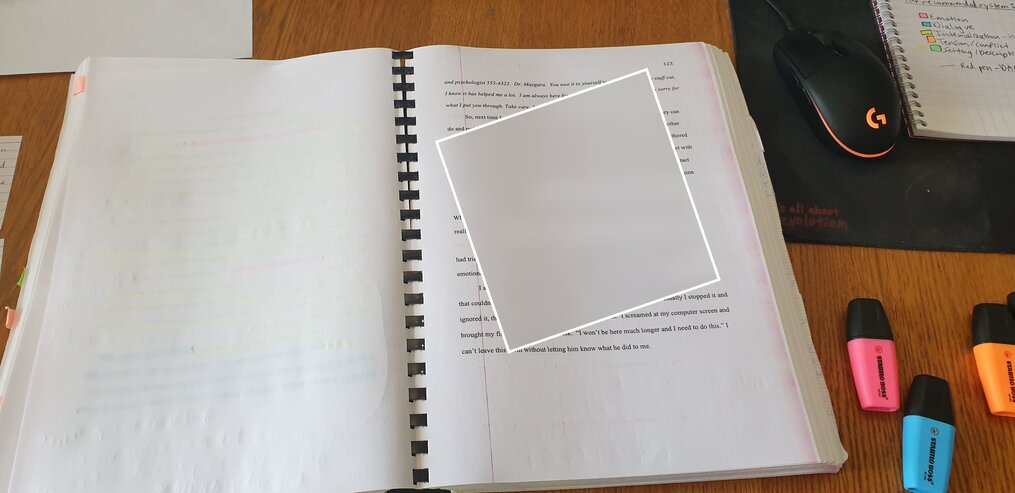
Have my Manuscript Printed Out and Bound
This has made my editing and revision process so much more fun. I love carrying my manuscript around with me and I bought a bunch of stickers to decorate it with. I wrote this blog about tips for binding your manuscript if you want to see how I did it. I will mark it up like crazy and then print out and bind my next draft.
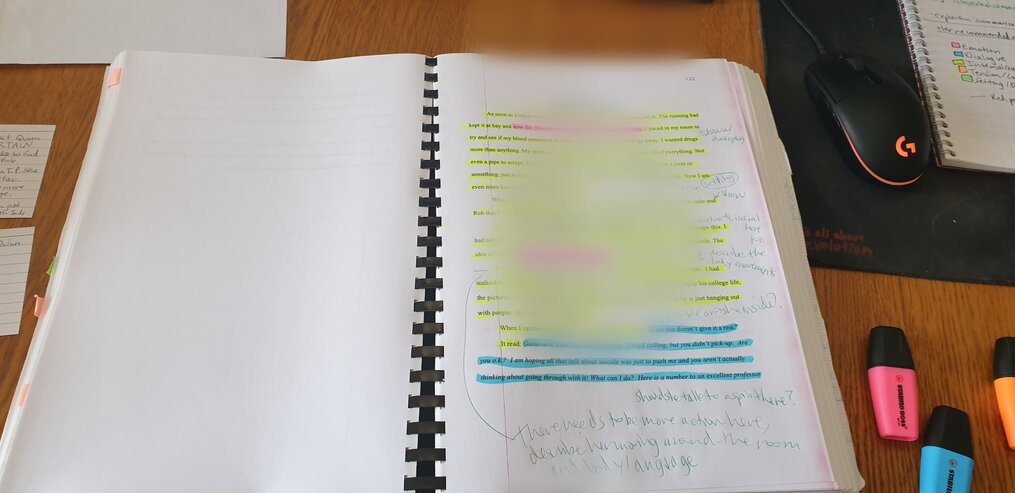
Color-code my chapter
I go through and color code the dialogue, visceral emotions, the exposition and narration, the conflict, and the setting. As I color-code, I identify elements that need to be fixed and make running notes along the page of things that need to be changed, usually without the actual solution so I keep going and don't get slowed down too much.
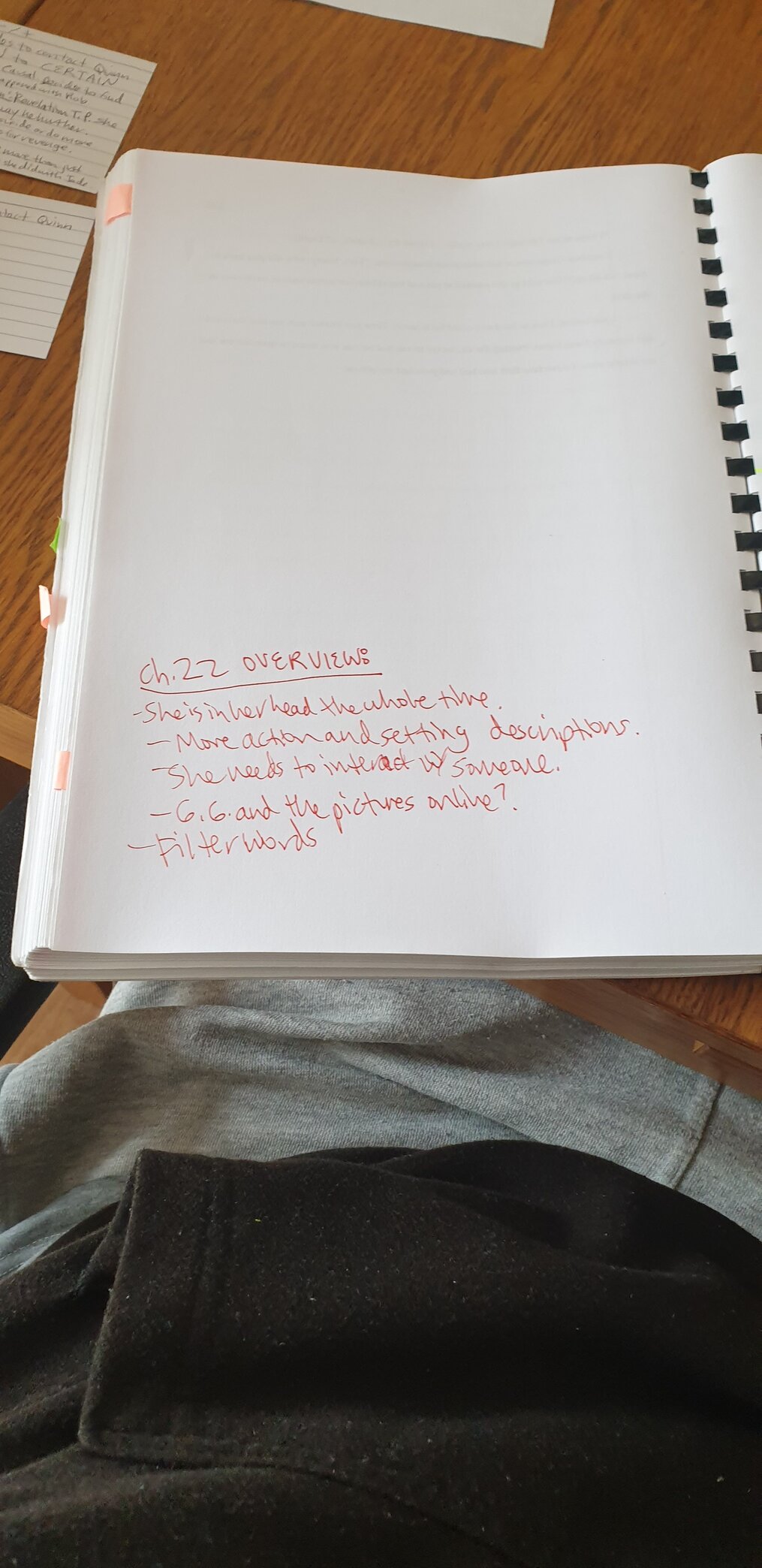
Make an Overview List of Changes that Need to be Made
Doing a quick synthesis when I am doing color-coding the chapter helps me get an action plan in mind to tackle the revisions.
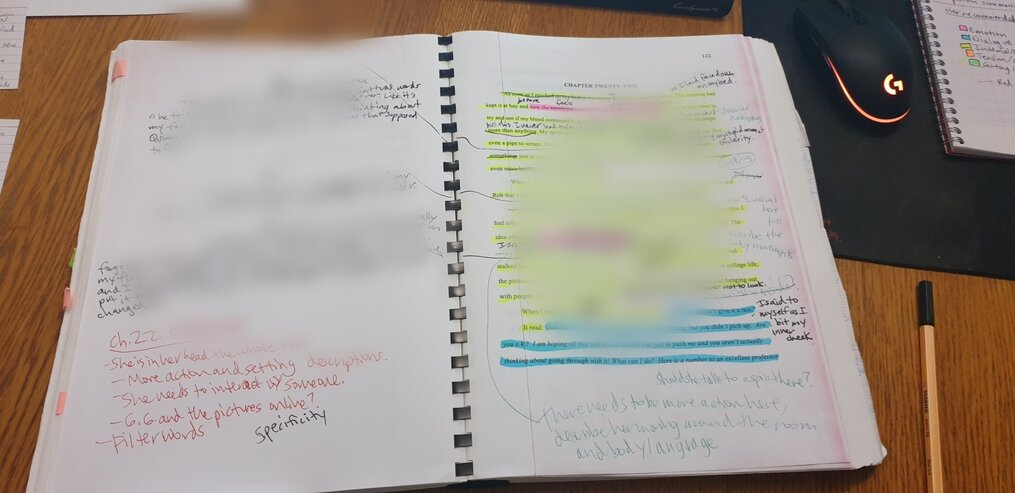
Make the changes
When I printed out my manuscript I left one page blank, so that I could write all over the opposite side. I go through and I rewrite a lot of the sentences and add things to the draft.
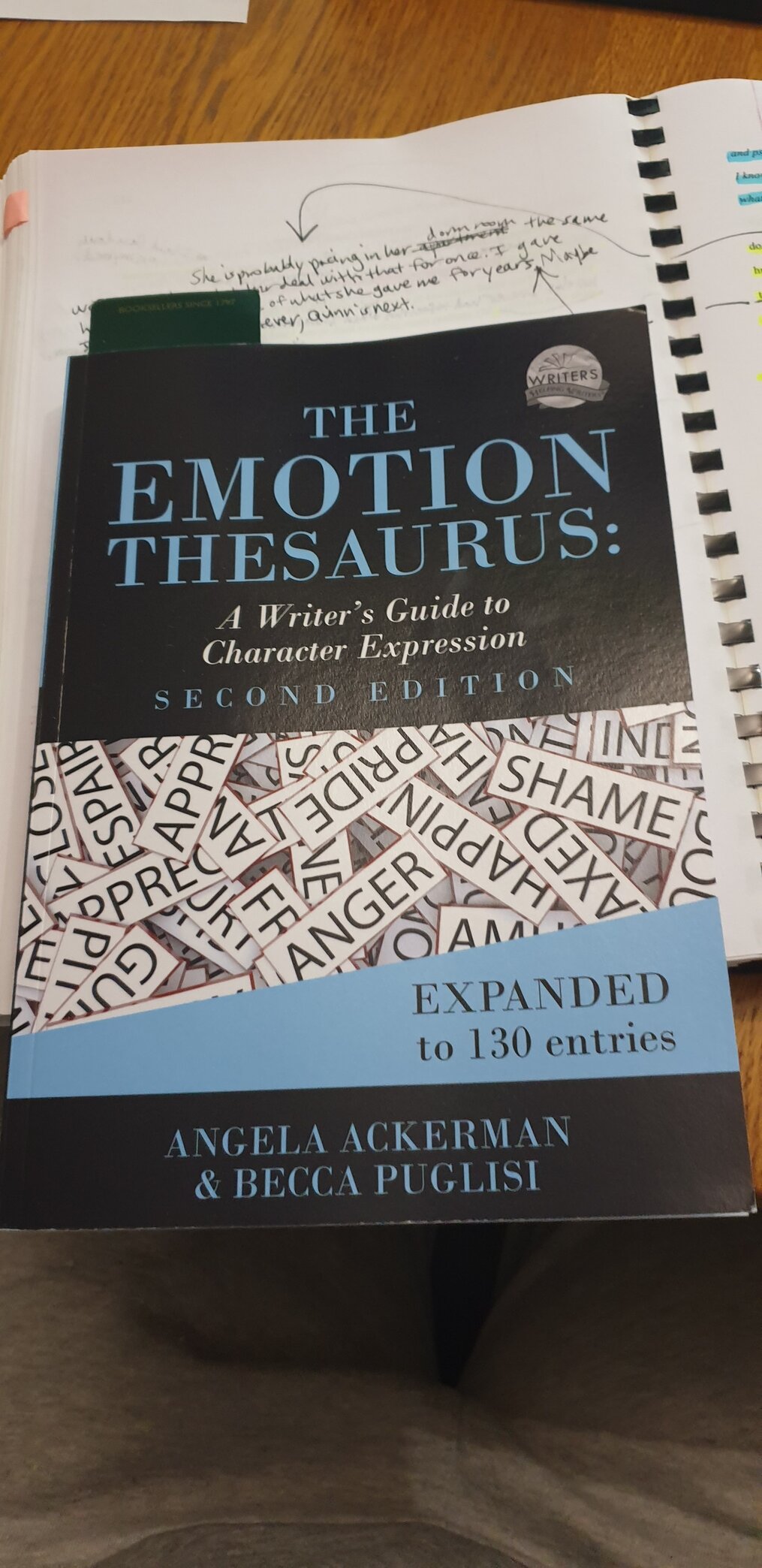
Use the Emotion Thesaurus to Show not Tell
The Emotion Thesaurus by Angela Ackerman and Becca Puglisi is an excellent resource to add in nonverbal communication based on the emotions of all of your characters.
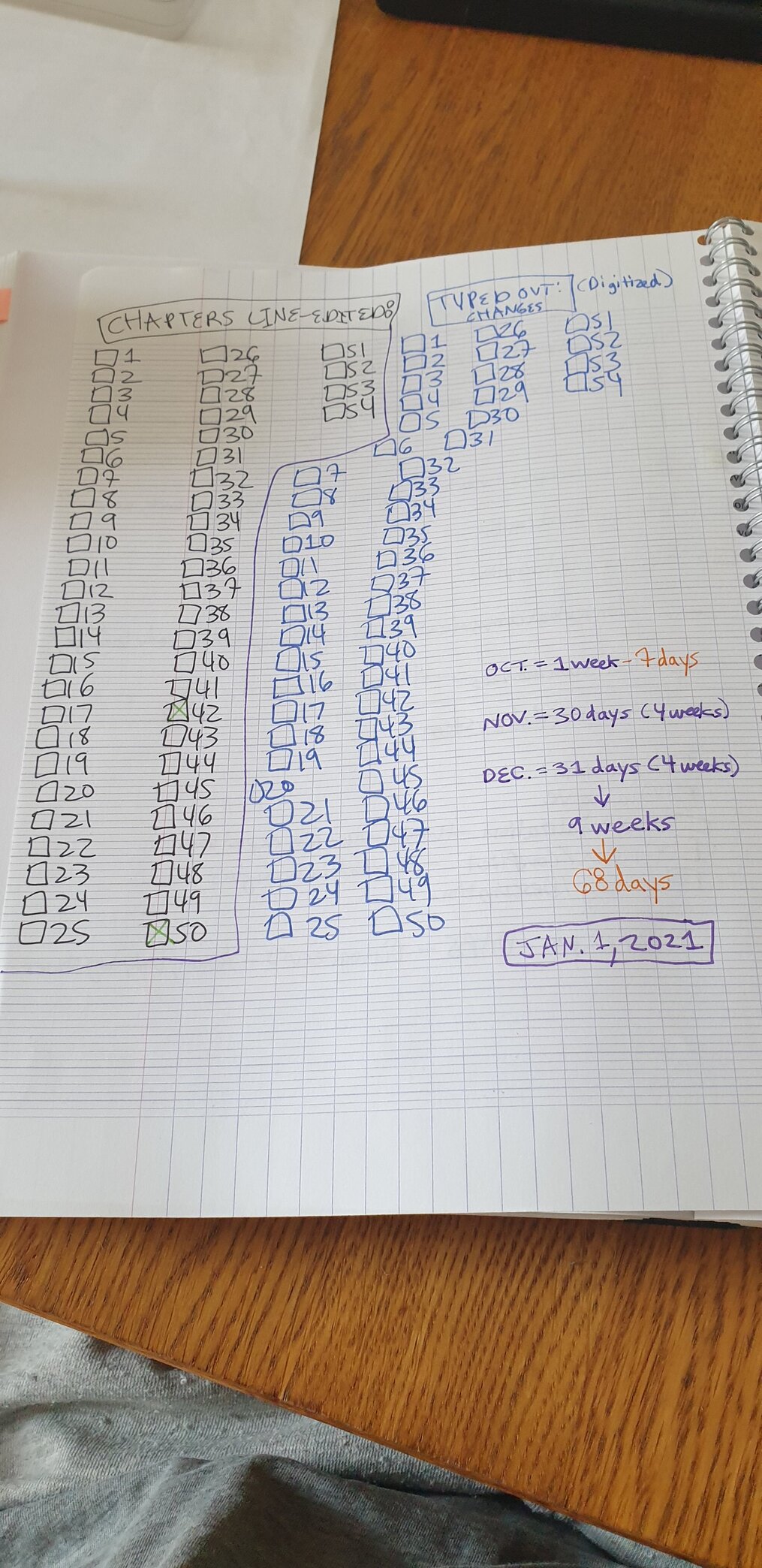
Track the Revised Chapters
I have two checklists for all of my chapters. One for the chapters that have been revised and one for the chapters that have actually been typed out. It all depends on my mood, but I usually type out the chapters a couple of weeks after I do the changes by hand. I like to do this for a final pass with the chapter and that is also where I focus on sentence variety, filter words, and choosing better nouns and verbs while I am typing out all of my changes from the printed out manuscript.
I am also motivated by checking off boxes in case you haven't noticed!
What tips do you have for line-editing? Have you ever thought about how you breakdown your editing process? Please leave a comment below.